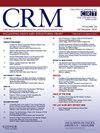接受经导管主动脉瓣植入术(COPS-TAVI)的小瓣环患者的心输出量。
IF 1.6
Q3 CARDIAC & CARDIOVASCULAR SYSTEMS
引用次数: 0
摘要
背景:关于小主动脉瓣环患者接受经导管主动脉瓣植入术(TAVI)的心输出量,根据植入的球囊扩张瓣(BEV)平台与自扩张瓣(SEV)平台进行比较的数据十分有限:这是一项回顾性分析,对象是成功接受 TAVI 的重度主动脉瓣狭窄和小瓣环患者。TAVI术后4周内使用超声心动图测量心输出量。数据由一名经验丰富的操作员记录和分析,该操作员不知道植入瓣膜的类型:138名患者纳入分析,其中57%的患者接受了BEV TAVI。两种平台的临床和超声心动图特征具有可比性,只是BEV组既往接受过心脏手术的患者较多,且主动脉瓣指数较小。计算机断层扫描得出的主动脉瓣环面积与TAVI术后的心输出量没有关系。与使用 BEV 进行 TAVI 的患者相比,SEV 患者的心输出量更大[平均差值 - 0.50 升/分钟,95 % CI (-0.99, -0.01)],心脏指数更高[平均差值 - 0.20 升/分钟/平方米,95 % CI (-0.47, 0.07)],但后者未达到统计学意义。与体表面积较小的患者不同,在体表面积较大的患者中,与 BEV 相比,SEV 患者的心输出量和心脏指数在统计学上都更大:结论:通过超声心动图测量,与BEV相比,接受SEV TAVI手术的小心脏瓣环患者的心输出量更大。这种差异在体表面积较大的患者中更为明显。本文章由计算机程序翻译,如有差异,请以英文原文为准。
Cardiac output in patients with small annuli undergoing transcatheter aortic valve implantation with self-expanding versus balloon expandable valve (COPS-TAVI)
Background
There is limited data on cardiac output in patients with small aortic annuli undergoing trans-catheter aortic valve implantation (TAVI) according to the implanted platform of balloon-expandable (BEV) compared to self-expanding valves (SEV).
Methods
This is a retrospective analysis of consecutive patients with severe aortic stenosis and small annuli who underwent successful TAVI. Cardiac output was measured using echocardiography within 4 weeks following TAVI. Data were recorded and analysed by an experienced operator who was not aware of the type of the implanted valve.
Results
138 patients were included in the analysis, of whom 57 % underwent TAVI with BEV. Clinical and echocardiographic characteristics were comparable between the two platforms, except for more frequent previous cardiac surgery and smaller indexed aortic valve in the BEV group. There was no relationship between computed tomography-derived aortic annulus area and cardiac output post TAVI. When compared to patients who underwent TAVI with BEV, those with SEV had larger cardiac output [mean difference − 0.50 l/min, 95 % CI (−0.99, −0.01)] and cardiac index [mean difference − 0.20 l/min/m2, 95 % CI (−0.47, 0.07)], although the latter did not reach statistical significance. Unlike patients with small body surface area, in those with large body surface area both cardiac output and cardiac index were statistically larger in patients who underwent SEV compared to BEV.
Conclusion
Cardiac output, as measured by echocardiography, was larger in patients with small annuli who underwent TAVI procedure with SEV compared to BEV. Such difference was more evident in patients with large body surface area.
求助全文
通过发布文献求助,成功后即可免费获取论文全文。
去求助
来源期刊

Cardiovascular Revascularization Medicine
CARDIAC & CARDIOVASCULAR SYSTEMS-
CiteScore
3.30
自引率
5.90%
发文量
687
审稿时长
36 days
期刊介绍:
Cardiovascular Revascularization Medicine (CRM) is an international and multidisciplinary journal that publishes original laboratory and clinical investigations related to revascularization therapies in cardiovascular medicine. Cardiovascular Revascularization Medicine publishes articles related to preclinical work and molecular interventions, including angiogenesis, cell therapy, pharmacological interventions, restenosis management, and prevention, including experiments conducted in human subjects, in laboratory animals, and in vitro. Specific areas of interest include percutaneous angioplasty in coronary and peripheral arteries, intervention in structural heart disease, cardiovascular surgery, etc.
 求助内容:
求助内容: 应助结果提醒方式:
应助结果提醒方式:


